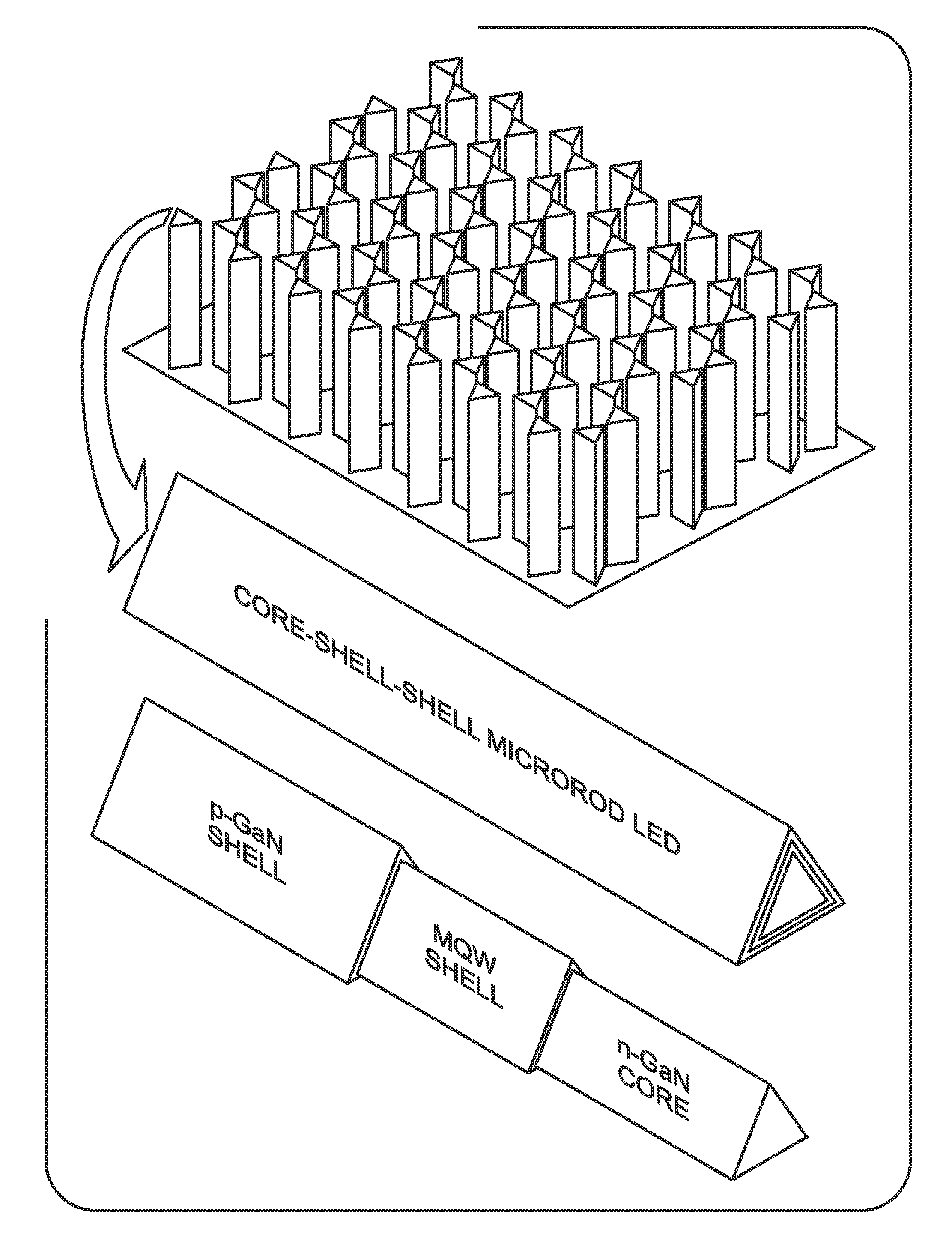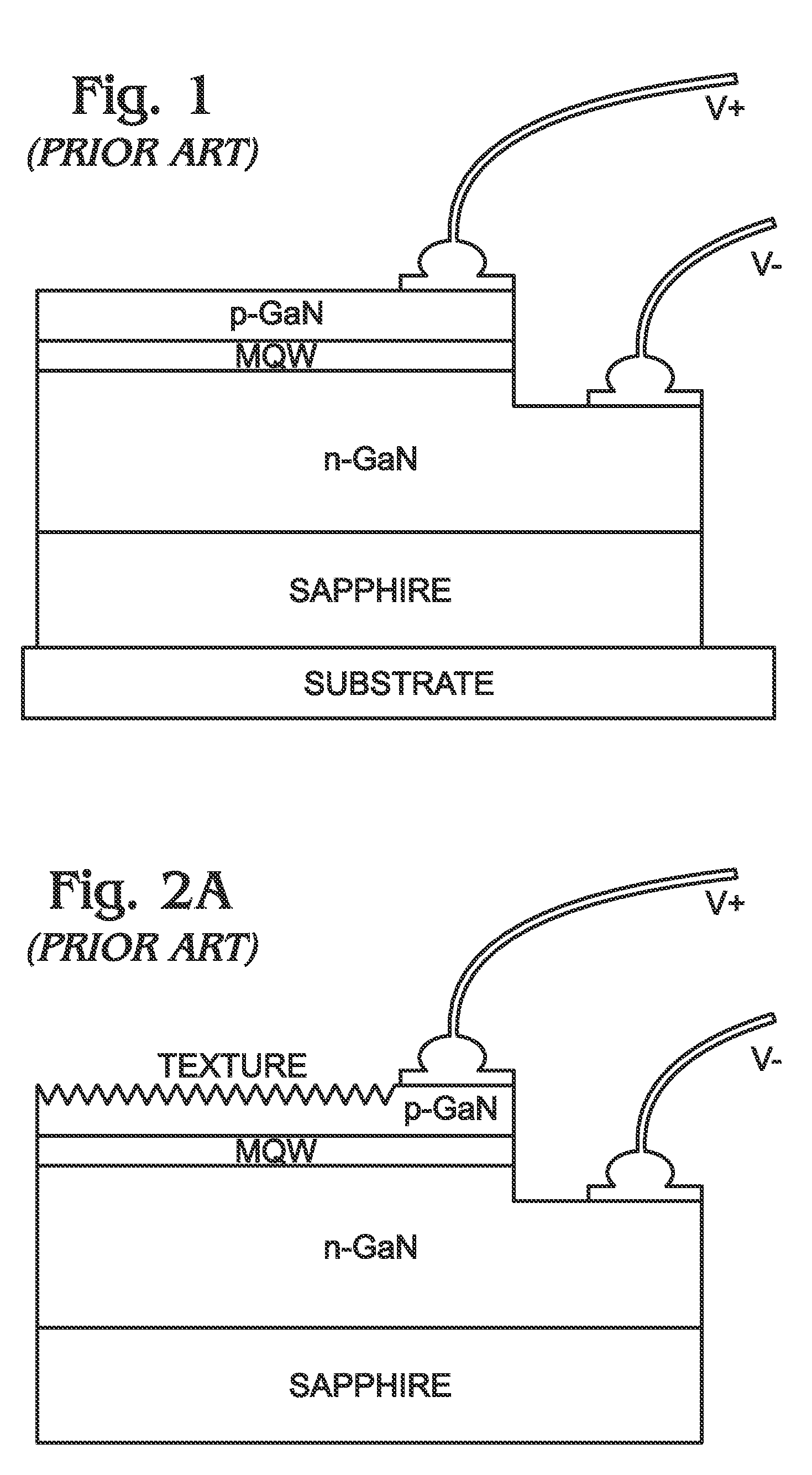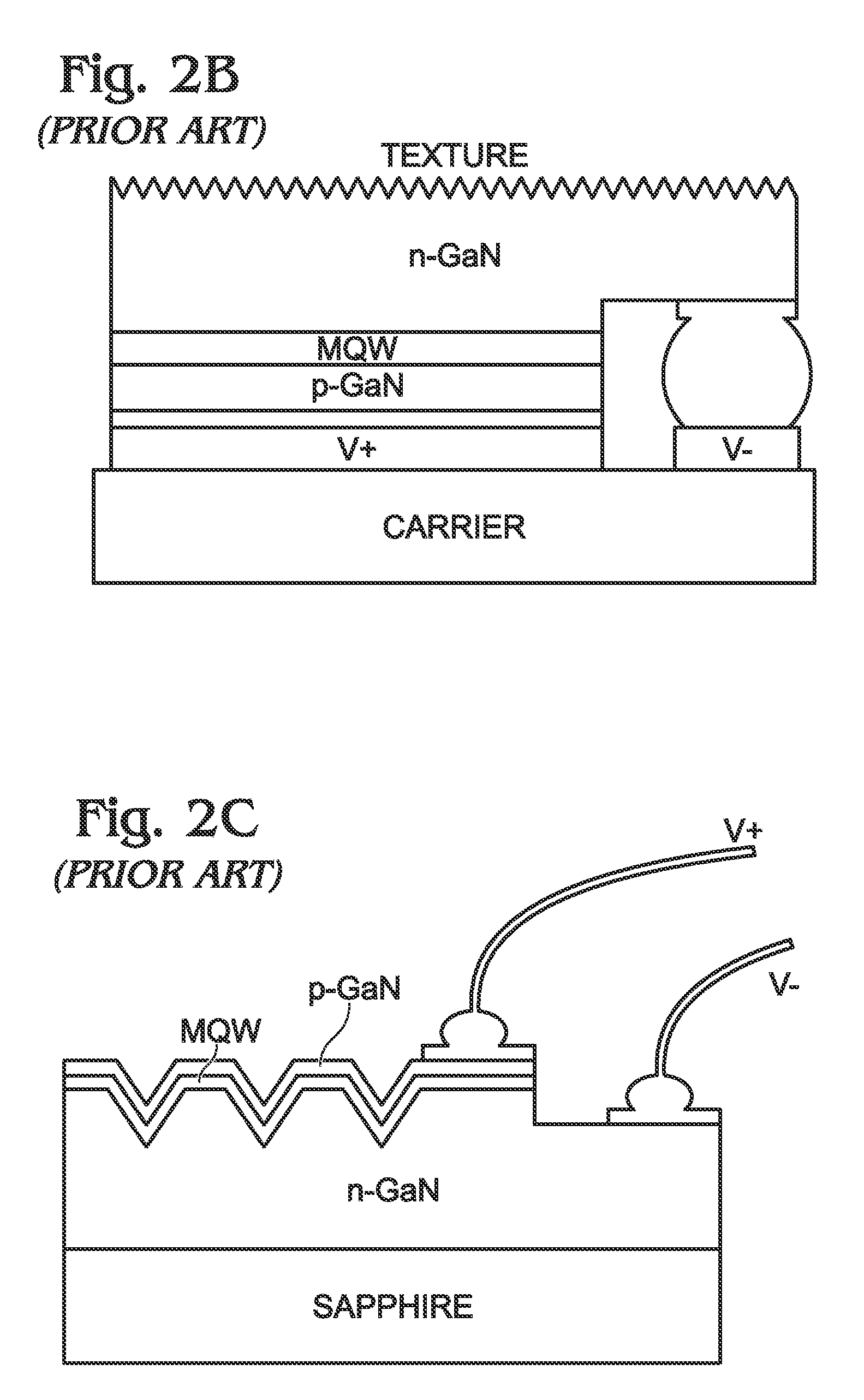Light emitting diode (LED) using three-dimensional gallium nitride (GaN) pillar structures with planar surfaces
a technology of gallium nitride and light-emitting diodes, which is applied in the direction of semiconductor/solid-state device manufacturing, electrical equipment, semiconductor devices, etc., can solve the problems of limiting the range of emission characteristics that are achievable, affecting device performance and reliability, and high cost of producing gans for devices. achieve the effect of improving performance, increasing emission area, and high efficiency
- Summary
- Abstract
- Description
- Claims
- Application Information
AI Technical Summary
Benefits of technology
Problems solved by technology
Method used
Image
Examples
Embodiment Construction
[0039]FIGS. 4A and 4B are partial cross-sectional views of a GaN three-dimensional (3D) structure. The GaN 3D structure 400 comprises a GaN pillar 402 and pillar sidewalls 404. The pillar sidewalls 404 are formed in either the m-plane (10 10) or a-plane ( 12 10). Each family of planes (m and a) both contain 6 faces. The 6 faces for the m-plane family are {10 10}, { 1010}, {01 10}, {0 110}, {1 100}, and { 1100}. For the a-plane family, the faces are {1 210}, { 12 10}, {11 20}, {2 110}, { 1120}, and { 2110}. Note that for these Miller indices, families are in (parentheses), faces are in {curly brackets}, and zone axes are in [square brackets]. As shown in FIG. 4B, the GaN pillar 402 has a triangular pattern. However, hexagonally shaped pillars may alternatively be formed, see FIG. 6B.
[0040]FIG. 5 is a partial cross-section view depicting a GaN 3D array. The array 500 comprises a substrate 502 with a top surface 504, with an array of GaN structures 506. Each GaN structure 506 has a fir...
PUM
 Login to View More
Login to View More Abstract
Description
Claims
Application Information
 Login to View More
Login to View More - R&D
- Intellectual Property
- Life Sciences
- Materials
- Tech Scout
- Unparalleled Data Quality
- Higher Quality Content
- 60% Fewer Hallucinations
Browse by: Latest US Patents, China's latest patents, Technical Efficacy Thesaurus, Application Domain, Technology Topic, Popular Technical Reports.
© 2025 PatSnap. All rights reserved.Legal|Privacy policy|Modern Slavery Act Transparency Statement|Sitemap|About US| Contact US: help@patsnap.com



